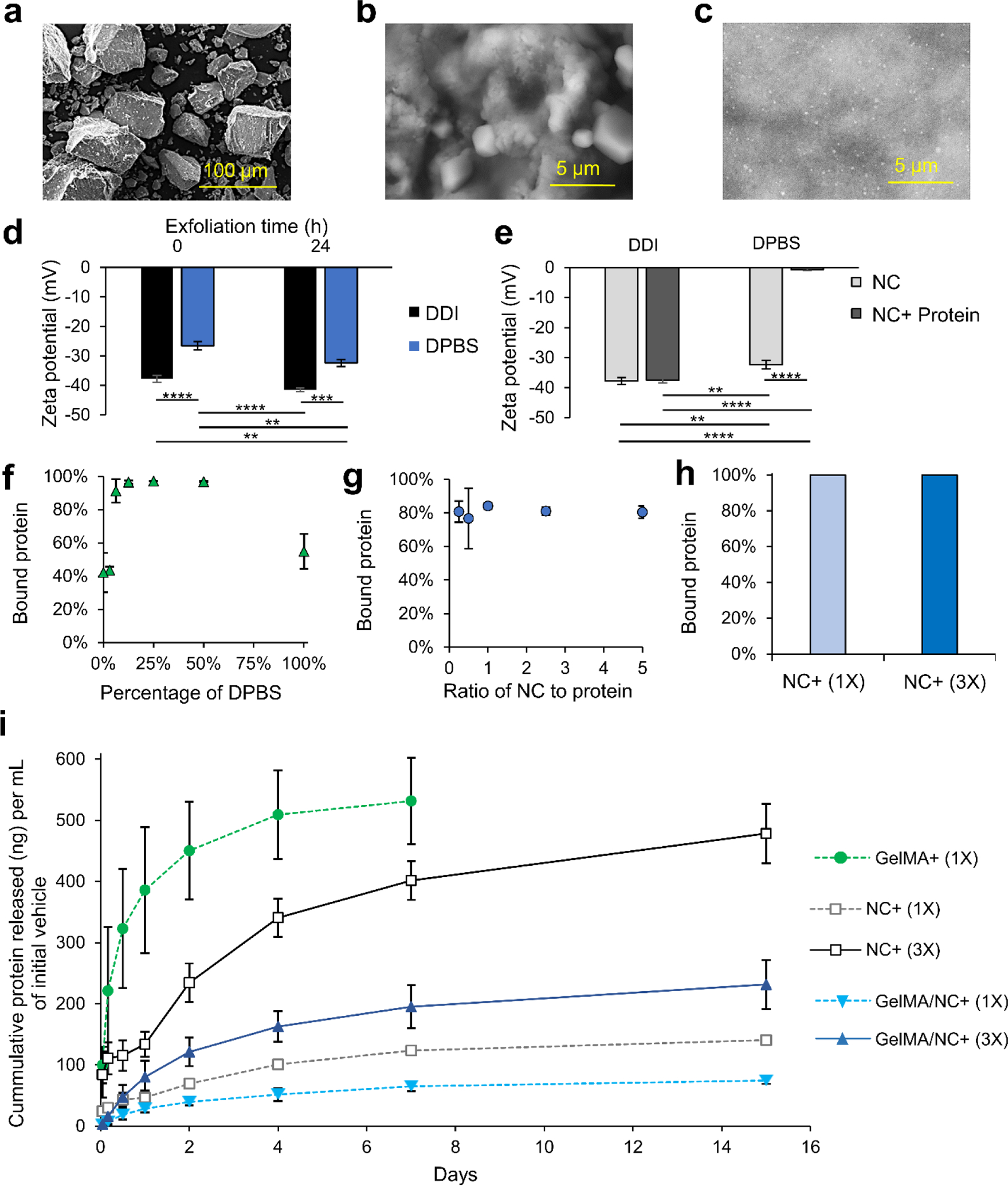Figure 3.

The interaction of Laponite® nanoclay (NC) with proteins and optimization for enhanced binding and sustained release. Scanning electron microscopy (SEM) of a) NC powder (scale bar: 100 μm), b) partial NC exfoliation in 100% DPBS (scale bar: 5 μm), and c) full NC exfoliation in 10% DPBS (scale bar: 5 μm). d) Increased zeta potential was observed for NC in both double-deionized (DDI) water and DPBS over a 24 h period demonstrating continual exfoliation. e) The zeta potential of NC in DDI water did not significantly change, while the zeta potential of NC in DPBS became approached zero after mixing with protein. f) Protein binding to NC solutions was highly dependent on salt solution. Near 100% binding was observed in 10–50% DPBS, while lower percentages of protein binding were detected at 0% and 100% DPBS concentrations. g) NC protein binding was not affected by increasing or decreasing the ratio of NC to protein. h) The application of 0.05% (w/v) of NC in a 10% DPBS solution yielded almost complete protein binding regardless of the protein concentration (1X and 3X correspond with 333 ng/mL and 1,000 ng/mL final concentration of protein encapsulated in GelMA, respectively). i) The mass of IGF-1 released normalized to the initial vehicle (DPBS or gel) volume over 15 days from GelMA alone (GelMA+ (1X)), protein-bound NC alone and not encapsulated (NC+ (1X) and (3X)), and protein-bound NC encapsulated in GelMA (GelMA /NC+ (1X) and GelMA/NC+ (3X)). The hydrogel only (GelMA+ (1X) group resulted in a quick release of almost all of the initially bound protein over 7 days. All NC groups slowed the release and continuously released protein over 15 days. The NC groups that were not encapsulated had a quicker release than the encapsulated groups of the same initial protein concentration. The hydrogel-encapsulated groups, GelMA /NC+ (1X) and GelMA/NC+ (3X), had similar release profiles regardless of the initial concentration of bound protein and retained a significant portion of the IGF-1 within the scaffolds. The 3X groups released almost 3 times the protein per volume of initial gel to the 1X groups.
